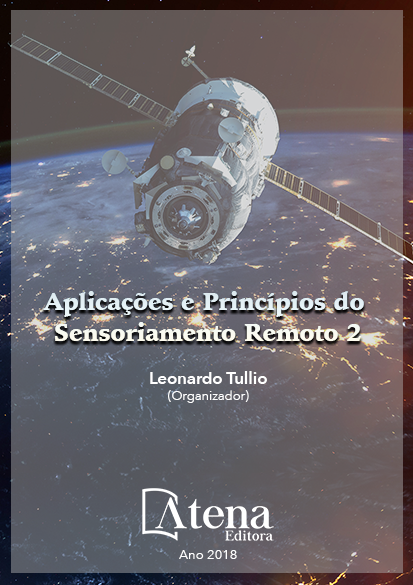
FRONTEIRA AGRÍCOLA E A ESTRUTURA DA PAISAGEM NA SUB-BACIA DO RIO RIACHÃO – OESTE DA BAHIA
Por ser uma área de fronteira
agrícola, o Cerrado da Bahia passou por intensas
transformações na paisagem. O objetivo deste
artigo é demonstrar o efeito da conversão de
áreas naturais em atividades agropecuárias,
sob a configuração espacial da paisagem na
sub-bacia hidrográfica do Rio Riachão, área
de expansão da fronteira agrícola, Cerrado
baiano. Imagens de satélite TM - Landsat 5
(1980 - 2010) foram usadas para mapear os
fragmentos naturais remanescentes e então
realizou-se uma intersecção entre “tamanho de
fragmento” e “declividade” para se obter células
homogêneas e se determinar métricas de
paisagem, por meio da extensão Path Analyst
5.0, disponíbilizado para o software ArcGIS 9.3.
Houve aumento da métrica NP (26%), seguido
pela redução da classe MPS (89%), TCA
(85,7%) e TCAI (40%) para a classe ≥ 300 (0 -
3%). Este resultado revela a suscetibilidade dos
fragmentos ao efeito de borda, sobretudo pela
maior interferência da matriz (cultura agrícola),
o que implica fragmentos de menor qualidade
ambiental para a manutenção da integridade da
estrutura da paisagem, ao longo dos trinta anos
de uso e ocupação do solo. Ao mesmo tempo,
a sub-bacia ainda apresenta 293 fragmentos
com MPS de 73 ha (2010), o que equivale a
uma área de 21.371 ha, bastante valiosa para
atividades de conservação ambiental, sobretudo
por apresentar fragmentos de complexidade
mediana (MPFD), apesar de suas formas
alongadas (MSI).
FRONTEIRA AGRÍCOLA E A ESTRUTURA DA PAISAGEM NA SUB-BACIA DO RIO RIACHÃO – OESTE DA BAHIA
-
DOI: Atena
-
Palavras-chave: Sensoriamento Remoto, Fronteira Agrícola, Fragmentos Naturais, Métricas da Paisagem.
-
Keywords: Remote Sensing, Agricultural Frontier, Natural Fragments, Landscape Metrics.
-
Abstract:
For being an area of agricultural
frontier, the Bahia’s Cerrado has undergone
intense landscape transformations. The
objective of this article is to demonstrate
the effect of conversion of natural areas in
agricultural activities, in the spatial configuration
of the landscape in the sub-basin of Rio
Riachão. Satellite images TM - Landsat 5
(1980 - 2010) were used to map the remaining
natural fragments and then was held an
intersection between “fragment size” and
“slope” for obtaining homogeneous cells and
then determine landscape metrics, by extending
Path Analyst 5.0, available for ArcGIS 9.3
software. There was an increase in the metric
NP (26%), followed by a reduction of MPS (89%), TCA (85.7%) and TCAI (40%) class
≥ 300 (0 - 3%). This result reveals the susceptibility of the fragments to the edge effect,
especially for greater interference matrix (crop), which implies lower environmental
quality fragments to landscape structure integrity maintenance, over the thirty years of
use and occupation soil. At the same time, the sub-basin also features 293 fragments
with MPS of 73 ha (2010), which is equivalent to an area of 21,371 ha, very valuable for
environmental conservation activities, especially because present median complexity
fragments (MPFD), though its elongated shapes (MSI).
-
Número de páginas: 15
- Crisliane Aparecida Pereira dos Santos


